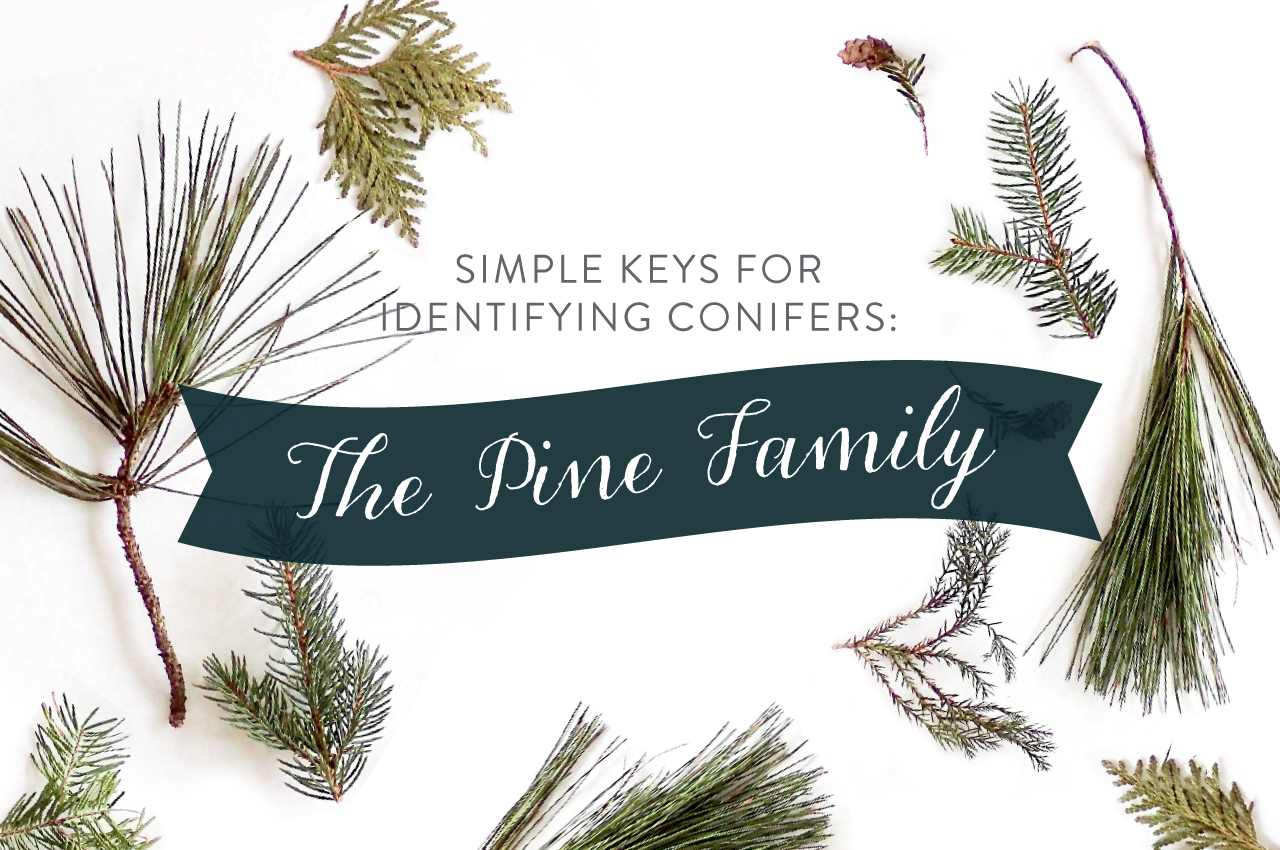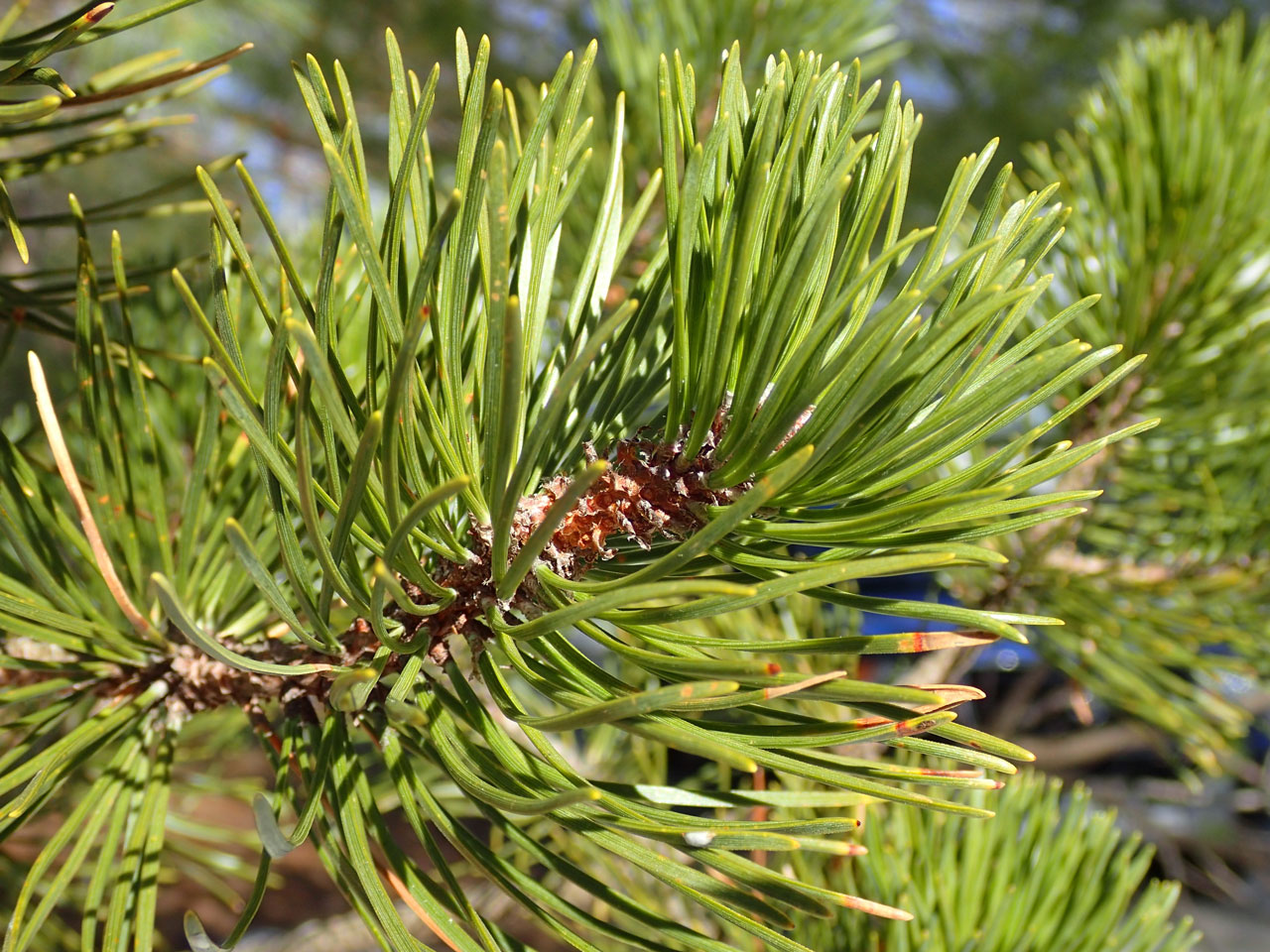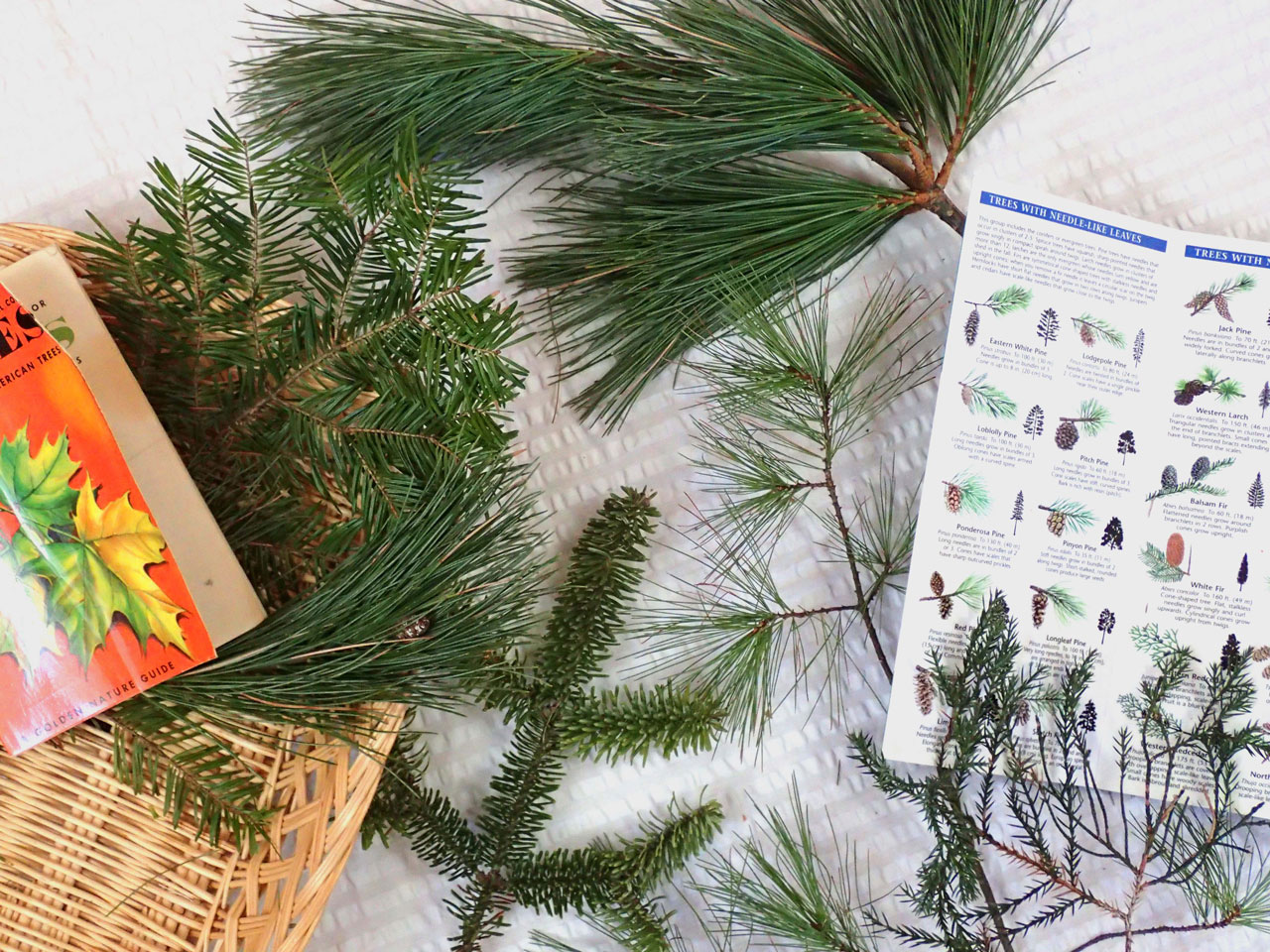Simple Keys for Identifying Conifers: The Pine Family

Have you ever given much consideration to the various pine trees around you? My children and I have been slowly identifying the deciduous trees in our neighborhood and can now identify a few during the winter by the buds that develop in late summer. But it wasn’t until recently that we set on a quest to learn more about the many conifers we see every day. We quickly learned that what we generally call a pine may not be just a pine. If you would like to investigate the conifers of the pine family with your child, we have some simple keys that will help you distinguish them.

What exactly is a conifer?
Conifer stems from Latin and means “cone bearer”. There are seven different families of conifers, all of which bear cones. With a some exceptions, most conifer trees are evergreens that maintain their color and leaves throughout the year. They are easily identified by their needle-like or scaly leaves.
For simplicity, let’s focus specifically on evergreen trees of the pine family…
Who’s in the pine family (Pinaceae)?
This family of conifers include pines, spruces, firs, hemlocks, larches (these are not evergreens), and true cedars. Members of the pine family have needles as opposed to scaly leaves. Spruce, fir, and hemlock needles grow singularly on the branch. The needles of pine trees grow in bundles of 2, 3, or 5. True cedars have clusters of 15 or more needles and, although some species have been naturalized in North America, they are native to the Middle and Far East.
How to tell them apart
Remember that the needles of pines grow in clusters of 2 or more.
To distinguish between spruces and firs, all you have to do is “shake hands” with the tree. Spruces can be stand-offish because their needles are pointed and sharp. They are also usually square in cross-section, making it easy to roll between your fingers. Fir trees are much friendlier. Their needles are softer and flat, which cannot be rolled between your fingers. You can give this mnemonic a try to help your child remember: spruces are stiff and sharp, firs are flexible and friendly.

You can find more keys to help you identify these conifers on our flash card download. Print them on card stock or laminate them to bring them with you on your next walk or hike and see how many of the trees can you identify.
You may also find these resources helpful:
- Trees, Leaves & Bark by Diane Burns
- The Tree Book for Kids and Their Grown-Ups by Gina Ingoglia
- Where Would I Be in an Evergreen Tree by Jennifer Blomgren
- National Wildlife Federation Field Guide to Trees of North America
- What Tree is That? Arbor Day Foundation Online Edition
- Trees With Needles: Online Tree Leaf Key
flash card photo sources- spruce cone, eastern white pine cone, fir cones

